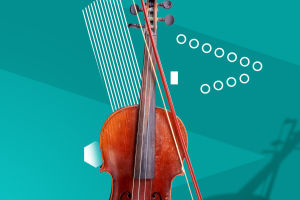Saxophone
The saxophone is a musical instrument invented by Antoine-Joseph Sax in Belgium in 1840.
Adolfo is good at clarinet and flute playing. His original vision was to design a bass instrument for orchestras. The Ophicleide played flexibly and could be adapted to outdoor performances. He combined and improved the mouthpiece of the bass clarinet with the body of the Orpheclyde and named the new instrument after himself.
The saxophone is also known as the "incomparable romantic instrument".
The saxophone can not only play classical music excellently but is also better at playing jazz music, and light music. When people think of jazz, the first instrument that comes to mind is the saxophone.
The most distinctive feature of jazz is improvisation, in which the strong and weak beats are inverted, and continuous syncopation is adopted. Make the rhythm of endless, dramatic timbre. It's intense, funny, and sad.
Saxophone in timbre, in the performance of the characteristics of the aspect, then adapted to the greatest characteristics of jazz improvisation needs. Therefore, improvisation has become a characteristic that saxophonists pursue.
The saxophone is made of metal with a wide range of strengths and weaknesses, which can be compared with other brass music in terms of the intensity of the sound.
It is also unattainable by other woodwind instruments, and has the characteristics of woodwind instruments in tone quality, with the brightness of the metal.
The timbre of the saxophone is similar to the human voice, that is to say, the timbre of the saxophone is very similar to or close to the human voice, giving people a sense of affinity and personification, which is incomparable to other wind instruments such as violin, trumpet, and oboe.
This is determined by the first two elements of the saxophone timbre.
Compared with other wind instruments, saxophone learning entry difficulty is relatively low, after learning it is easier to master the basic playing skills.
In terms of structure design, Saxophone uses a parabolic linear conical structure and Bom system key system, as well as the single reed mouthpiece design similar to the clarinet, which makes the saxophone easier to be played, and the obturator key design also reduces the difficulty of finger keys.
Most learners can master basic playing techniques and play some basic pieces after a period of training. In addition, the saxophone can embody a very strong musical expression, with a comprehensive tonal system, covering the range from ultra-high pitch to double bass. Can deduce different repertoire, can greatly enhance the appeal of music works.
In addition, Sax's tone is special, both calm and indifferent, giving people a kind of magnetic beauty. The appearance of the saxophone is relatively beautiful, which can give people rich visual effects when playing, and strengthen the audience's cognition of the image of the instrument.
The saxophone can combine the color and intensity of woodwind and brass instruments, showing a rich musical color. From the actual performance of the wind orchestra, the application of saxophone can blur the marginality of different wind instruments, so that the whole performance presents a harmonious atmosphere.
Listeners may not be able to recognize the sound of the saxophone directly, but they can experience a whole new auditory experience. In addition, the saxophone can well coordinate the timbre of woodwind instruments when playing together with them, so integrating the saxophone into the whole performance can greatly enhance the appeal of music works.
After years of development, the saxophone has formed a perfect vocal range system. It can participate in the performance of various musical works, showing its unique artistic charm whether solo or ensemble.
In particular, Saxophone plays an important function of color music in the orchestra, which can strengthen the emotion of the whole musical work and improve the performance effect and level of the wind orchestra.

